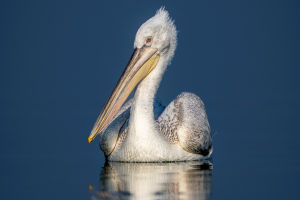Amazing Odonata
Hey Lykkers! Odonata, an ancient order of insects, is renowned for its stunning members: dragonflies and damselflies
These fascinating creatures captivate with their grace and intricate designs. Let's dive into the world of Odonata and explore their unique features, behavior, and importance.
Introduction to Odonata
The Odonata order comprises over 5,000 species globally, divided into two suborders: Dragonflies (Anisoptera) and Damselflies (Zygoptera). Both are predatory insects known for their distinctive appearance and remarkable flying abilities.
Dragonflies vs. Damselflies
While both dragonflies and damselflies share common traits, they have distinct differences:
Dragonflies: Typically larger and bulkier, dragonflies have broad, horizontally held wings. Their eyes are large and cover most of their head, providing a wide field of view. They are powerful fliers and can hover, fly backward, and make sharp turns.
Damselflies: Generally smaller and more delicate, damselflies have slender bodies and hold their wings vertically above their body when at rest. Their eyes are smaller and located more to the sides of their head. They are agile fliers but less robust than dragonflies.
Lifecycle and Behavior
Odonata undergo an incomplete metamorphosis, consisting of three stages: egg, nymph (or larva), and adult.
Egg: Female odonates lay eggs in or near water, where they hatch into nymphs.
Nymph: The nymph stage can last from a few months to several years, depending on the species. Nymphs are aquatic and have a voracious appetite, preying on smaller aquatic organisms.
Adult: After several molts, the nymph emerges as an adult, transforming into a winged insect. Adult odonates are excellent fliers and are primarily predatory, feeding on other insects.
Odonata: Dragonflies and Damselflies - Order Spotlight Insect Spotlight Pro
Video By Insect Spotlight Project
Ecological Importance
Odonata play a vital role in ecosystems:
Predators: Both nymphs and adults are skilled predators. Nymphs help control aquatic pest populations, while adults manage insect populations in their terrestrial habitat.
Bioindicators: Their presence and diversity can indicate the health of aquatic environments, making them valuable for ecological monitoring.
Conservation
While many odonates are not currently endangered, habitat destruction, pollution, and climate change pose threats to their populations. Conserving wetlands and maintaining clean water sources are crucial for their survival.
Odonates are a favorite among naturalists and photographers for their vibrant colors and intricate wing patterns. Observing them in their natural habitat provides insights into their behavior and ecological roles.
In summary, Odonata, with their mesmerizing appearance and ecological significance, offer a window into the delicate balance of nature. Whether you're a budding entomologist or simply a nature enthusiast, appreciating these insects enriches our understanding of the natural world.


